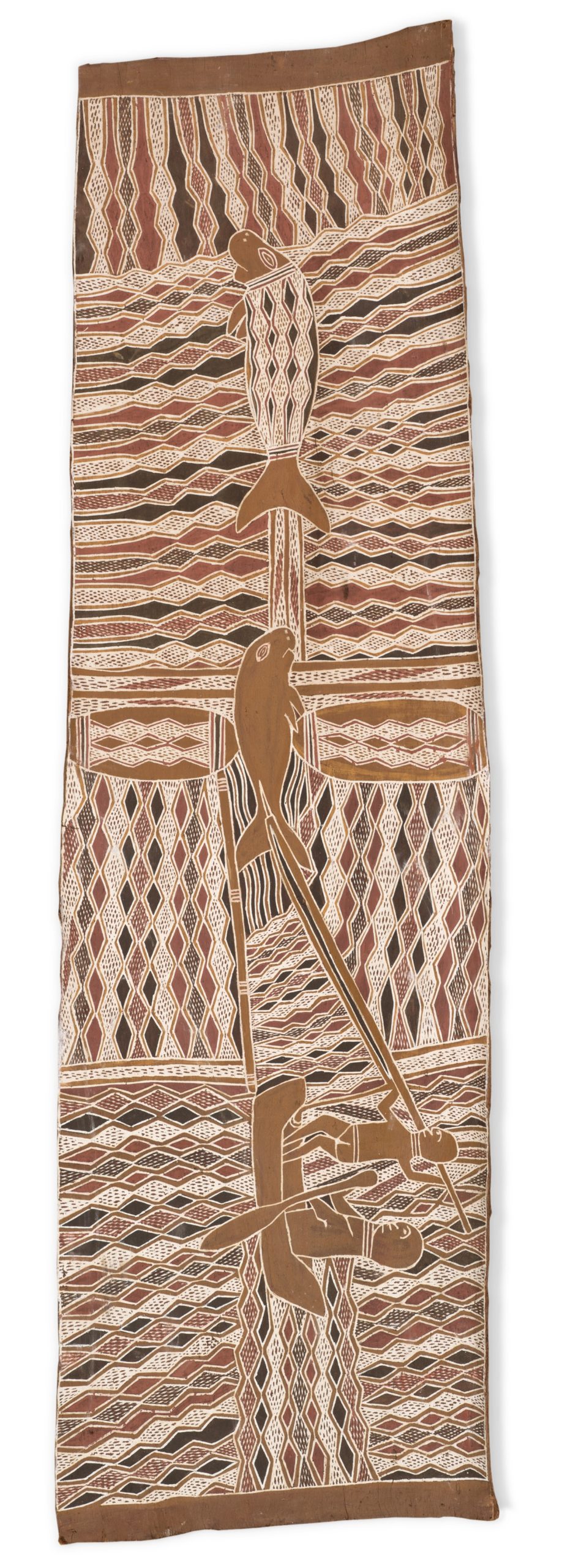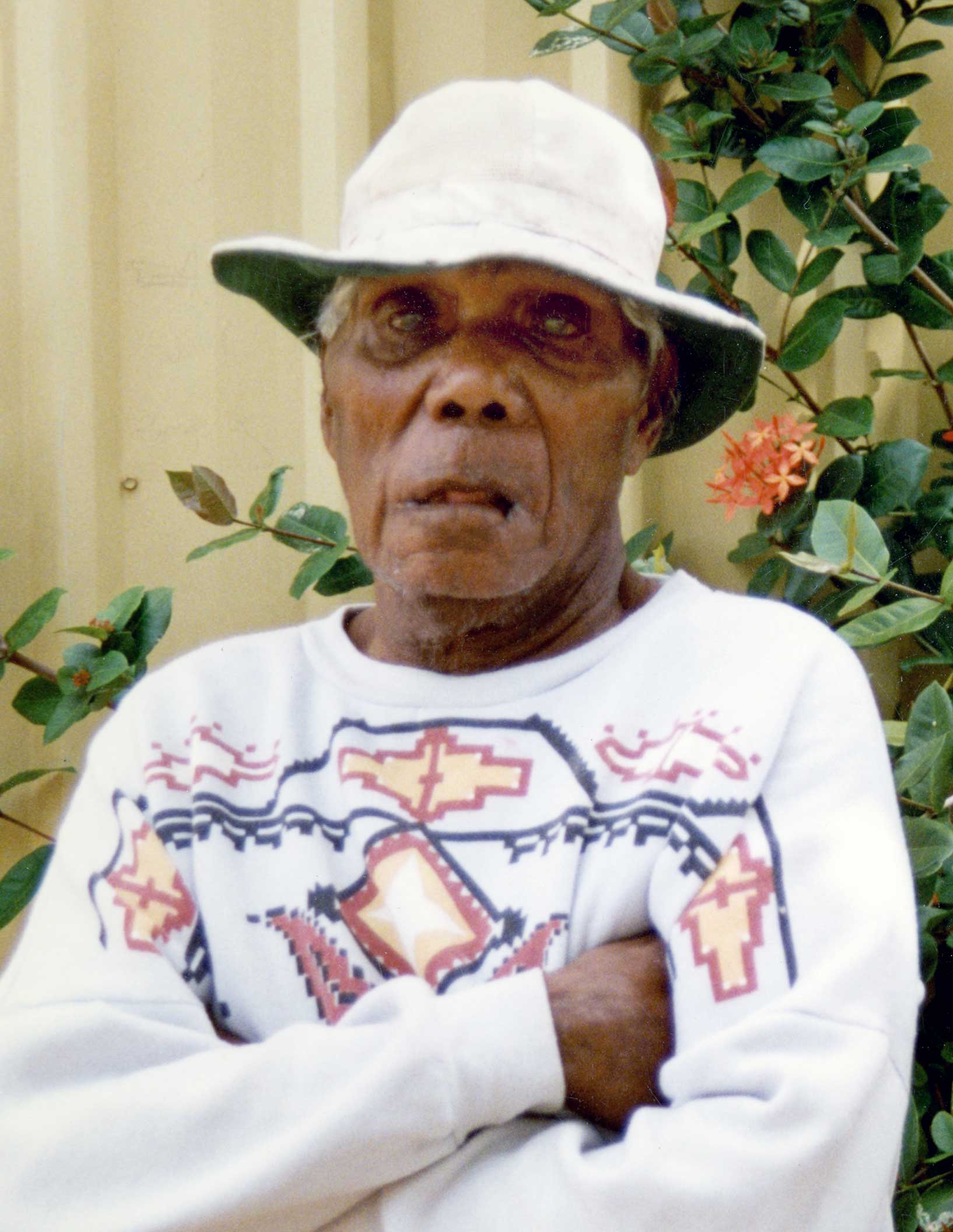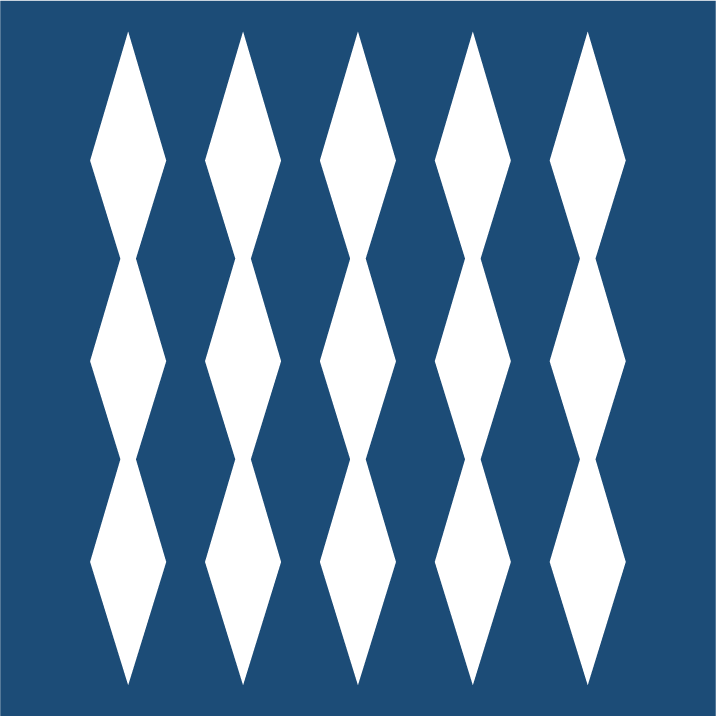
"This story is about two men named Garramatji and Burrak. These men were living together at Yathikpa, on the beach. They decided to go to the bush to get baḻwurr (red-flowering kurrajong string) and gundarrpa (harpoons). They sat under the special tree, Maḏirrimy, to make rope and harpoons. After they finished, they saw a djunuŋguyaŋu (dugong) so they got into their miyaṉgi (canoe) to go after it. They speared djunuŋguyaŋu, but it swam through the fire that Bäru (the ancestral crocodile) had dropped in the sea where there is a sacred rock. They didn’t catch the djunuŋguyaŋu, and they didn’t eat the djunuŋguyaŋu. The fire is still at the sea, where the rock is, at Yathikpa. This painting and story belongs to the Maḏarrpa clan; it’s only for Maḏarrpa. "
– DJAMBAWA MARAWILI AM
More Info
Baraltja is the residence of Burrut’tji (also known as Munḏukul) the lightning serpent. It is an area of floodplains that drain into northern Blue Mud Bay. It is on country belonging to the Maḏarrpa and denotes an area of special qualities pertaining to fertility and the mixing of waters. From Maḏarrpa (and Dhaḻwaŋu clan) lands, freshwater spreads onto the Baraltja flood plains with the onset of the monsoonal wet season. A tidal creek into Blue Mud Bay flows with the freshwater, flushing the brackish mix into the sea over an ever shifting sandbar, which is a manifestation of Burrut'tji. This flushing of freshwater excites Burrut’tji to stand on its tail spitting lightning in the directions from where the weather comes from.
In some renditions, open ended strings of diamonds mark the classic miny’tji (designs) of the saltwater estate of Yathikpa. At Yathikpa, Bäru, the ancestral crocodile, carrying and being burnt by the ancestral fire crossed the beach from Garraŋali (crocodile’s nest) and entered the saltwater. Bäru decided, after having his burns soothed by the waters, that he would stay in these waters. His sacred powers in line with that of the fire imbues the water there today. The eggs at Garraŋali are shown under the care of the mother crocodile. Gany’tjurr the Heron travels between fresh and salt and is an archetype of the Yirritja hunter.
Later from the same beach Ancestral Hunters on seeing Dugong took their harpoon and canoe out to the sea of Yathikpa in pursuit. The hunters were lured too close to a dangerous rock by the dugong seeking shelter. The dugong here feed on the gamata, a sea grass that is a manifestation of flames on the sea bed. Wavy ribbons of seagrass sway in the sunlit water as depicted here. Fire at this sacred site boiled the water capsizing the canoe. This is sometimes called an ancestral tide and it is speculated that this is the oral tradition of an ancient tsunami which initiates death and founds existing mortuary ceremonies in the region like the sacred sand sculpture Yiŋapuŋapu which is a canoe shaped space which holds the contamination of decay at bay. The sacred harpoon changed into Dhakandjali the hollow log coffin/memorial pole that floats on the seas of Yathikpa and further afield within Blue Mud Bay, its directions connecting other Yirritja clans (Maŋgalili and Dhaḻwaŋu) through association of kin across Blue Mud Bay.
lightning serpents.
– Buku-Larrŋgay Mulka Centre
Additional Information
Decade
1969
Medium
Natural pigments on eucalyptus bark
Dimensions (IN)
53 5/32 x 15
Dimensions (CM)
135 x 38
Credit
Museum and Art Gallery of the Northern Territory.
Gift of the NT Administration and the Australian Institute of Aboriginal & Torres Strait Islander Studies, 1975.
Abart-0402.
Narrative
Maḏarrpa
Maḏarrpa is a Yirritja moiety clan. Major spiritual themes include Bäru, a Maḏarrpa ancestor who...
Location
1960s
The 1960s were a decade of tumult and triumph for Yolŋu art and artists. In...
About The Artist(s)

Clan
Maḏarrpa
Artist Dates
c.1921-2005
Alternative Names
Wakutbi
Wakuthi Marawili
Wakuthi Marawili was born at Dhurruputjpi and was the husband of Mulkuṉ Wirrpanda. He later moved to the Rose River settlement at Numbulwar. In the 1970s, he led the Maḏarrpa clan back to their homelands at Bäniyala, where he established a community that thrives today under the leadership of his son Djambawa Marawili.
Collections Represented
Art Gallery of South Australia
Art Gallery of Western Australia
Museum and Art Gallery of the Northern Territory
